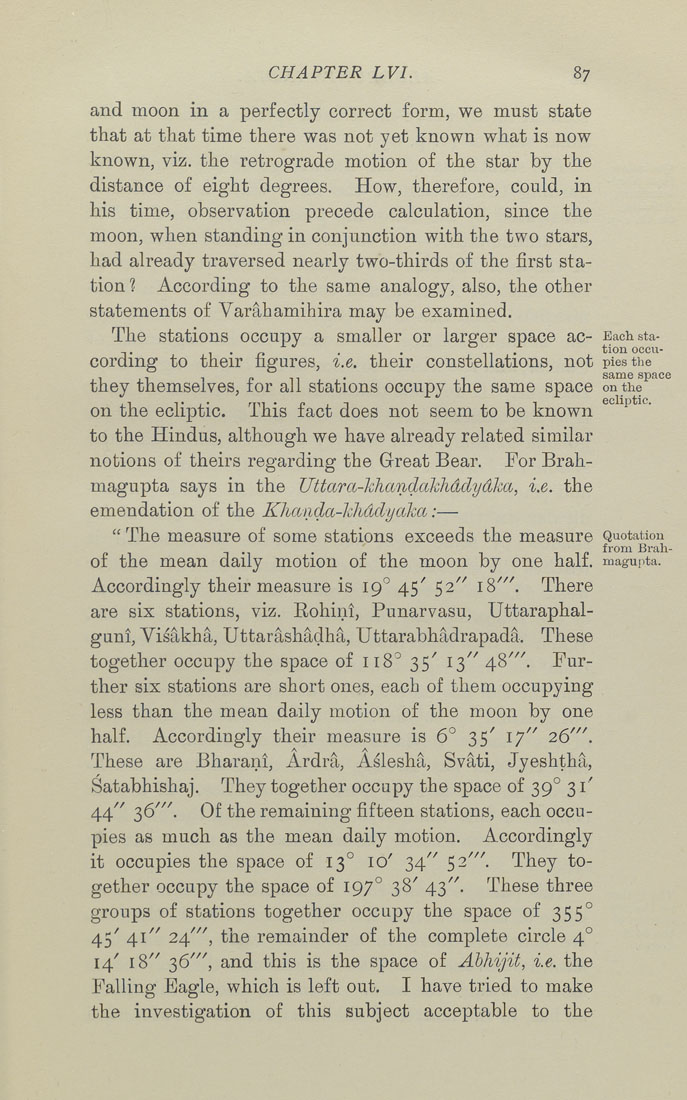CHAPTER LVI. 87
and moon in a perfectly correct form, we must state
that at that time there was not yet known what is now
known, viz. the retrograde motion of the star by the
distance of eight degrees. How, therefore, could, in
his time, observation precede calculation, since the
moon, when standing in conjunction with the two stars,
had already traversed nearly two-thirds of the first sta¬
tion? According to the same analogy, also, the other
statements of Varahamihira may be examined.
The stations occupy a smaller or larger space ac- Eachsta-
-,. , . „ . , . -, . tion occu-
cordmg to their figures, i.e. their constellations, not pies the
, , ^ „ . same space
they themselves, tor all stations occupy the same space on the
on the ecliptic. This fact does not seem to be known
to the Hindus, although we have already related similar
notions of theirs regarding the Great Bear. For Brah¬
magupta says in the Uttarct-khctndctkhddydkct, i.e. the
emendation of the Khctndct-khddyctkct:—
" The measure of some stations exceeds the measure Quotation
. -PI 1 1 c ^'""^ Brah-
ot the mean daily motion of the moon by one half, magupta.
Accordingly their measure is 19° 45' ^2" i'^'". There
are six stations, viz. Rohinl, Punarvasu, Uttaraphal-
gunl, Visakha, Uttarashadha, Uttarabhadrapada. These
together occupy the space of 118^ 35^ i^," 48'''. Fur¬
ther six stations are short ones, each of them occupying
less than the mean daily motion of the moon by one
half. Accordingly their measure is 6° 35' ly" 26'".
These are Bharani, Ardra, Aslesha, Svati, Jyeshtha,
Satabhishaj. They together occupy the space of 39° 31'
44^' 36"'. Of the remaining fifteen stations, each occu¬
pies as much as the mean daily motion. Accordingly
it occupies the space of 13° 10' 34" ^2'". They to¬
gether occupy the space of 197° 38' 43". These three
groups of stations together occupy the space of 355°
45' 41'' 24''', the remainder of the complete circle 4°
14' 18'' 36'^^ and this is the space of Abhijit, i.e. the
Falling Eagle, which is left out. I have tried to make
the investigation of this subject acceptable to the
|








